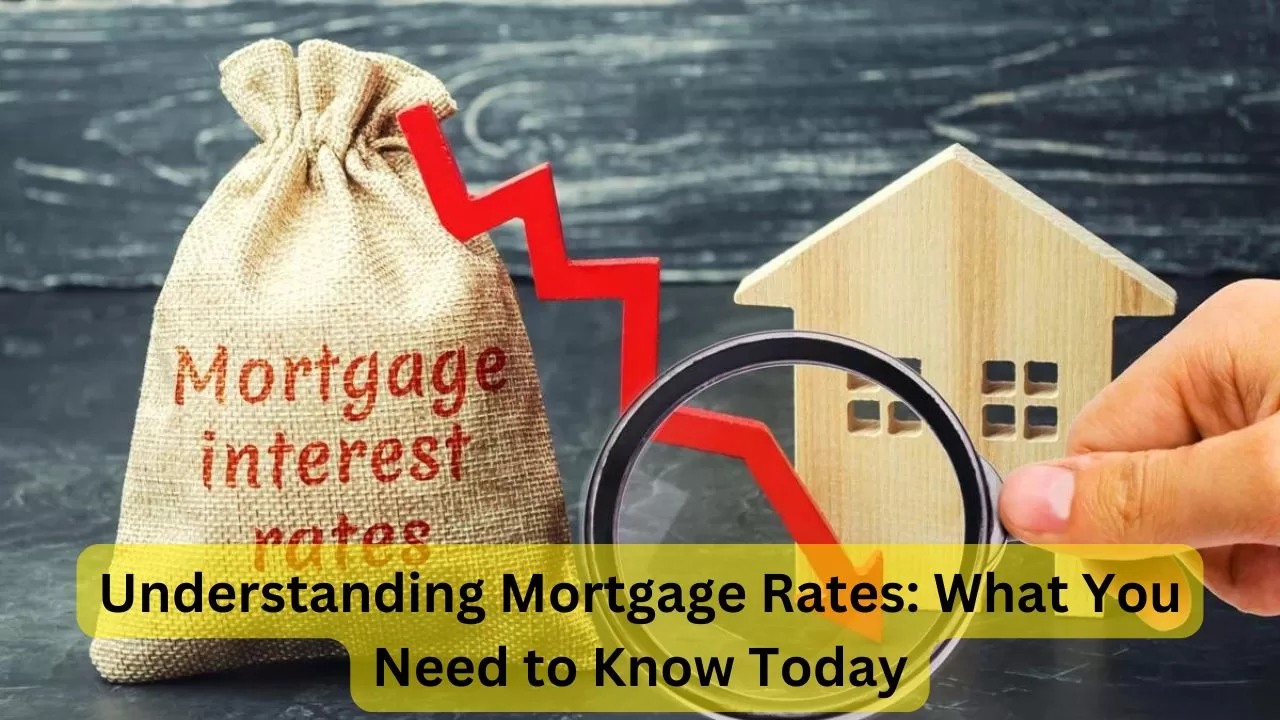
For anyone looking to buy a home, mortgage rates are a key factor that can make or break the affordability of a property. Whether you’re a first-time homebuyer or refinancing an existing mortgage, understanding how mortgage rates work and what affects them is crucial. Mortgage rates today are influenced by a variety of economic factors, and the rate you qualify for can significantly impact your monthly payment and the total cost of your home loan.
In this blog, we will explore everything you need to know about mortgage rates, including what they are, how they work, the factors that influence them, and how to secure the best mortgage rate for your needs.
What Are Mortgage Rates?
Mortgage rates represent the interest charged by lenders on a home loan. When you borrow money to purchase a property, the lender charges interest on the amount you borrow. This interest, expressed as a percentage, is the mortgage rate. The higher the rate, the more you will pay in interest over the life of the loan, and vice versa.
There are two primary types of mortgage rates:
- Fixed-rate mortgages: The interest rate remains the same for the entire term of the loan.
- Adjustable-rate mortgages (ARMs): The interest rate starts low and can fluctuate after an initial period based on market conditions.
How Mortgage Rates Work
When you take out a mortgage, you agree to pay back the loan over a specified period, typically 15, 20, or 30 years. The mortgage rate determines how much interest you will pay on the loan amount over time. For example, if you borrow $300,000 at a 3% interest rate, you will pay a certain amount of interest on top of the principal loan amount each month.
The rate you are offered depends on several factors, such as:
- Your credit score
- Your down payment
- The loan term
- Current market conditions
For fixed-rate mortgages, the interest remains constant, which means your monthly payments will stay the same for the entire term of the loan. In contrast, an adjustable-rate mortgage may offer a lower initial interest rate, but it can change periodically based on market conditions, potentially raising or lowering your monthly payments.
Mortgage Rates Today: Current Trends
As of today, mortgage rates fluctuate daily based on market conditions. Over the past few years, mortgage rates have reached historic lows due to the economic effects of the global pandemic. However, as the economy stabilizes and inflation concerns grow, interest rates have begun to rise.
Today’s mortgage rates can vary depending on the type of loan you’re looking for:
- 30-year fixed mortgage: Often the most popular mortgage option, offering stability with a slightly higher interest rate.
- 15-year fixed mortgage: This option allows you to pay off your loan faster, often with a lower interest rate, but higher monthly payments.
- 5/1 ARM: This adjustable-rate mortgage offers a fixed rate for the first five years, after which the rate can adjust annually.
What Affects Mortgage Rates?
Several factors impact the mortgage interest rates offered to borrowers:
1. Economic Factors
Mortgage rates are highly influenced by the overall economy. When the economy is strong, rates tend to rise due to higher demand for loans. Conversely, during economic downturns or times of uncertainty, such as during a recession, mortgage rates may fall as the government attempts to stimulate the housing market.
2. The Federal Reserve
The Federal Reserve does not set mortgage rates directly, but its actions heavily influence them. When the Fed raises or lowers interest rates in response to economic conditions, mortgage rates often follow suit. In an effort to control inflation or stimulate the economy, the Fed may raise rates, leading to higher mortgage interest rates for borrowers.
3. Inflation
When inflation rises, the cost of goods and services increases. Lenders often raise mortgage rates during times of higher inflation to compensate for the reduced purchasing power of money. As inflation rises, mortgage rates typically follow.
4. Bond Market
Mortgage rates are also influenced by the bond market. Mortgage-backed securities (MBS) are investments made up of bundled mortgages. When investors demand more of these bonds, mortgage rates tend to decrease. Conversely, when there’s less demand, mortgage rates rise.
5. Your Personal Financial Situation
The mortgage rate you qualify for is largely determined by your personal financial situation. Lenders consider the following factors when offering rates:
- Credit Score: Borrowers with higher credit scores are seen as less risky, which typically results in lower interest rates.
- Down Payment: A larger down payment often results in a lower interest rate since the lender is taking on less risk.
- Loan Amount: The amount you borrow also plays a role. Larger loan amounts may carry higher rates.
Fixed-Rate vs. Adjustable-Rate Mortgages
Choosing between a fixed-rate and adjustable-rate mortgage depends on your financial situation and your long-term plans.
- Fixed-rate mortgages provide stability because your monthly payments remain the same throughout the life of the loan. This is ideal for homeowners who plan to stay in their home for a long period.
- Adjustable-rate mortgages (ARMs) start with a lower interest rate, which can be appealing to buyers who plan to sell or refinance before the adjustable period begins. However, after the fixed-rate period ends, the rate can fluctuate, making it a riskier option in uncertain markets.
How to Secure the Best Mortgage Rates
To get the best mortgage rates, consider the following tips:
1. Improve Your Credit Score
A high credit score is one of the most effective ways to qualify for lower mortgage rates. Lenders see borrowers with good credit as less of a risk, which allows them to offer better rates. Aim to pay down debt, avoid missed payments, and keep credit card balances low to improve your score.
2. Increase Your Down Payment
Putting down a larger down payment reduces the amount you need to borrow, which can also lead to a lower interest rate. A higher down payment reduces the lender’s risk and shows that you are financially prepared.
3. Consider a Shorter Loan Term
Opting for a shorter loan term, such as a 15-year fixed mortgage instead of a 30-year one, can lead to a lower interest rate. While monthly payments will be higher, you’ll save significantly on interest in the long run.
4. Shop Around for Lenders
Mortgage rates vary from lender to lender, so it’s important to shop around and compare offers. Speak with multiple lenders to find the best rates and terms available.
5. Lock in Your Rate
Once you’ve found a mortgage rate that suits your needs, consider locking it in. Interest rates can fluctuate, so locking in your rate ensures you won’t be affected by any future rate hikes.
Conclusion
Mortgage rates today are influenced by a variety of economic factors, from the Federal Reserve’s policies to inflation and the bond market. While rates can fluctuate, understanding the factors that affect them can help you make informed decisions about your home loan. By improving your credit score, increasing your down payment, and shopping around for the best rates, you can secure a mortgage that fits your financial goals.
Whether you’re purchasing your first home, refinancing an existing mortgage, or simply exploring your options, staying informed about mortgage rates is key to making smart financial decisions.
